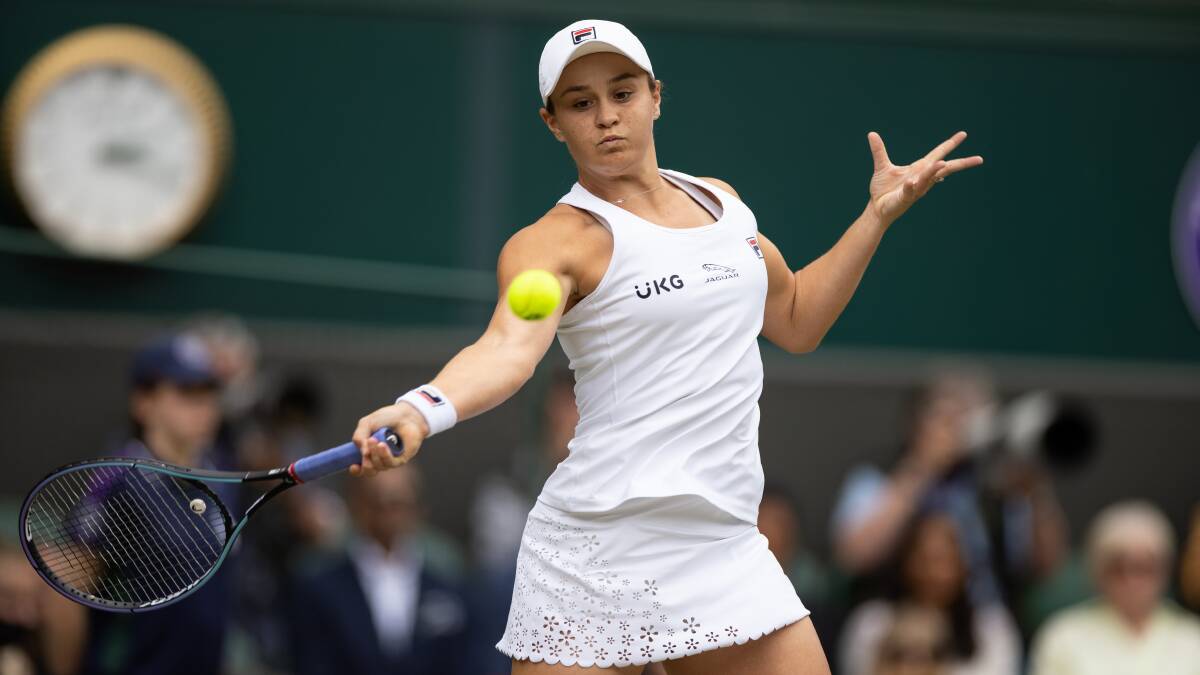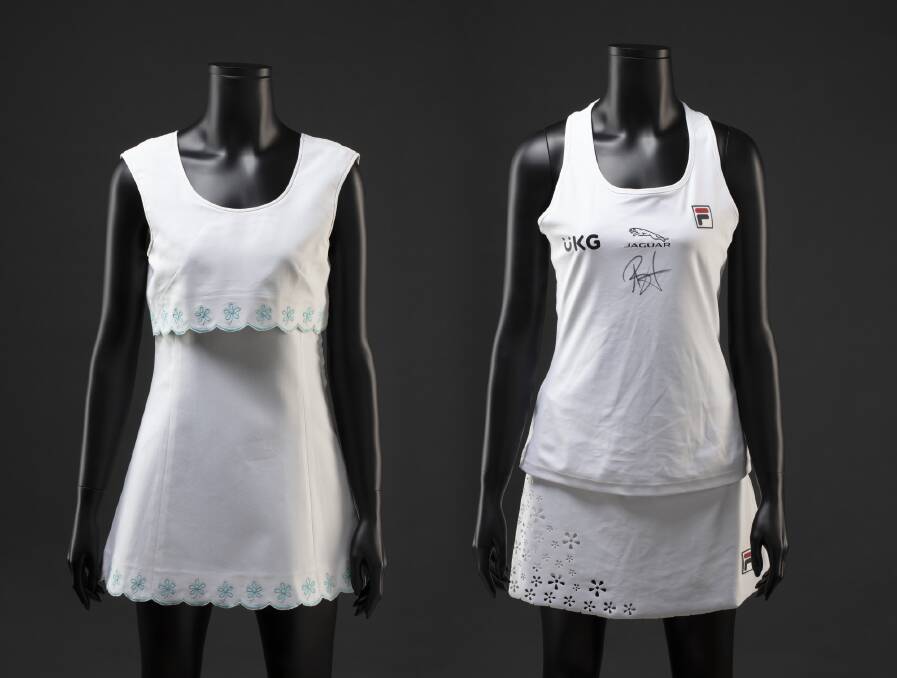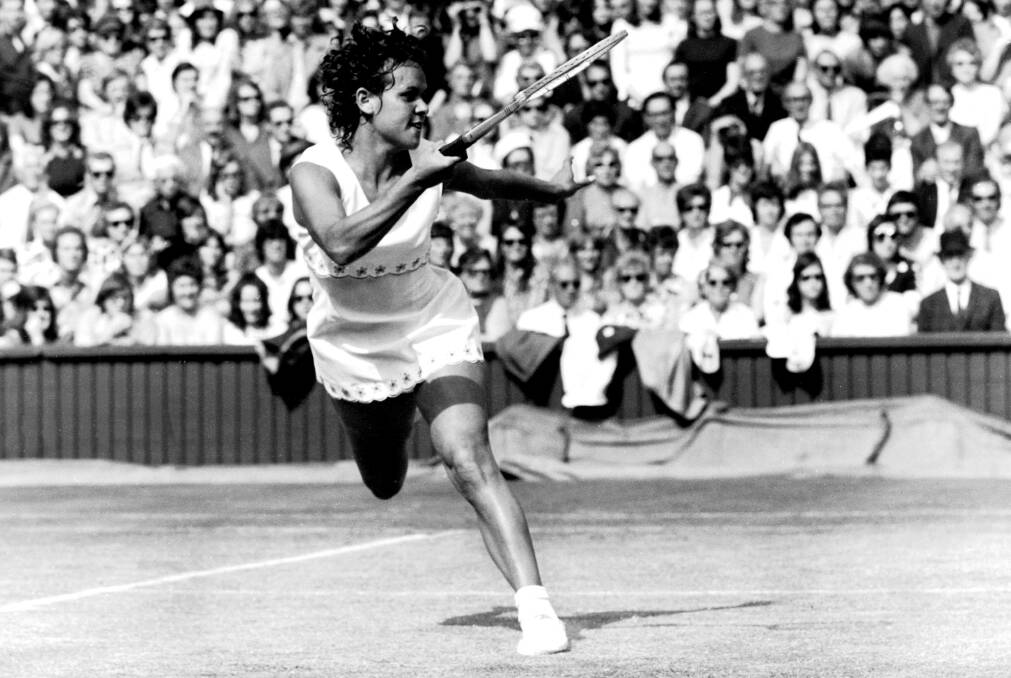
Ash Barty's tank top is bright white and slightly creased, like it's just come out of the dryer.
Subscribe now for unlimited access.
or signup to continue reading
And, aside from the scrawled signature across the front, the top looks for all the world like it was destined to be tossed into a pile of similarly functional sports garments, ready for a future training session.
Except that this is the one Barty was wearing when she won the 2021 Wimbledon final.
Curators at the National Museum of Australia were watching with interest, and it didn't take long for one of them to get on the phone to Barty's people.
Six months down the track, and the top, with matching white skirt, now has pride of place in the museum's National Historic Collection, alongside the dress worn by Evonne Goolagong Cawley, Barty's friend and mentor, at Wimbledon in 1972.

The significance of Barty's win last year was momentous. As a proud Ngarigo woman, she was the second Aboriginal woman to win the Ladies Singles title - Goolagong Cawley was the first.
Only true aficionados would have picked up the significant detailing in Barty's Fila "Trailblazer" outfit, which featured a floral design echoing the the blue floral trim on Goolagong Cawley's very 70s-style Wimbledon dress designed by Ted Tinling, considered the 20th century's leading designer of tennis dresses.
Side-by-side, the outfits are linked by five decades of struggle and triumph.
Curator Jennifer Rodrigues said she and her team had reached out to Barty's foundation straight after the historic match in July last year, and, after months of back-and-forth negotiating, they were thrilled when she agreed to donate the outfit.

"It adds a distinct significance to the museum's sporting collection, it captures Ashleigh's journey and her exceptional achievements at the sport's elite level," Dr Rodrigues said.
"Encapsulating the design inspiration from Goolagong's 1971 Wimbledon outfit already in the National Historical Collection, this object reminds us of the special relationship between these two tennis greats, and their shared heritage."
There had been plans to display them at the Australian Open this year to mark the 100th anniversary of women's singles competition at the year's first major tournament.
But timing didn't allow, and the two outfits will eventually be displayed side-by-side at the museum in Canberra.


